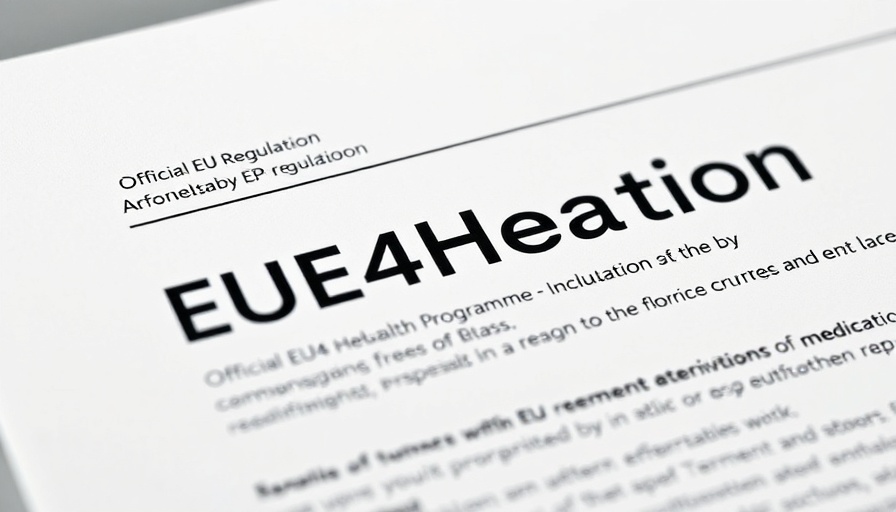
The EU4Health Programme: A Comprehensive Vision for Health
The EU4Health Programme, established under Regulation (EU) 2021/522, is a sweeping initiative that emerged in the wake of the COVID-19 pandemic. With an initial budget of €5.3 billion dedicated to enhancing health infrastructure across Europe between 2021 and 2027, this program aims to not only tackle immediate crises but also prepare member states for long-term healthcare challenges.
One of the core objectives of EU4Health is to foster collaboration among member states through the exchange of best practices and knowledge sharing. By strengthening health systems, improving access to services, and optimizing resource allocation, this program allows countries to tackle health challenges that transcend borders. For instance, the pandemic illustrated how interconnected our health systems are; therefore, collaborative responses become crucial.
Why EU4Health Matters to Citizens
For ordinary citizens, the EU4Health Programme represents assurance that their health is at the forefront of EU priorities. It encompasses a variety of initiatives aimed at enhancing health promotion, disease prevention, and readiness for health emergencies. The programme believes that investing in health translates into broader societal benefits, emphasizing how health is not merely a sector but an integral pillar of economic and social stability.
Future Insights: A Healthier Europe?
Looking ahead, EU4Health lays the groundwork for a strengthened European Health Union, aimed at not only responding effectively to crises like COVID-19 but also addressing systemic health issues—be it the chronic strain on healthcare systems or the rising prevalence of diseases. With its multi-faceted approach, focusing on digital health innovations and preventive measures, the programme is expected to lead to a healthier Europe.
Connecting with Key Stakeholders to Drive Change
The success of the EU4Health programme hinges on active participation from various stakeholders, including health organizations, civil society, and governments. Their combined efforts ensure that the programme is tailored to meet the needs of diverse populations across member states.
As we move forward, it is essential for citizens to remain informed about the EU4Health initiatives and engage in discussions about health policies that affect them directly. It's not just about health systems—it's about how those systems shape our daily lives, ensuring safety, accessibility, and quality.
Conclusion
The EU4Health Programme is not just a financial initiative; it is a bold commitment to reshaping healthcare across Europe. By prioritizing health, it aims to enhance resilience, promote equitable access, and empower communities. Stay engaged, stay informed, and advocate for health reforms that matter to you!
 Add Row
Add Row  Add
Add 




Write A Comment